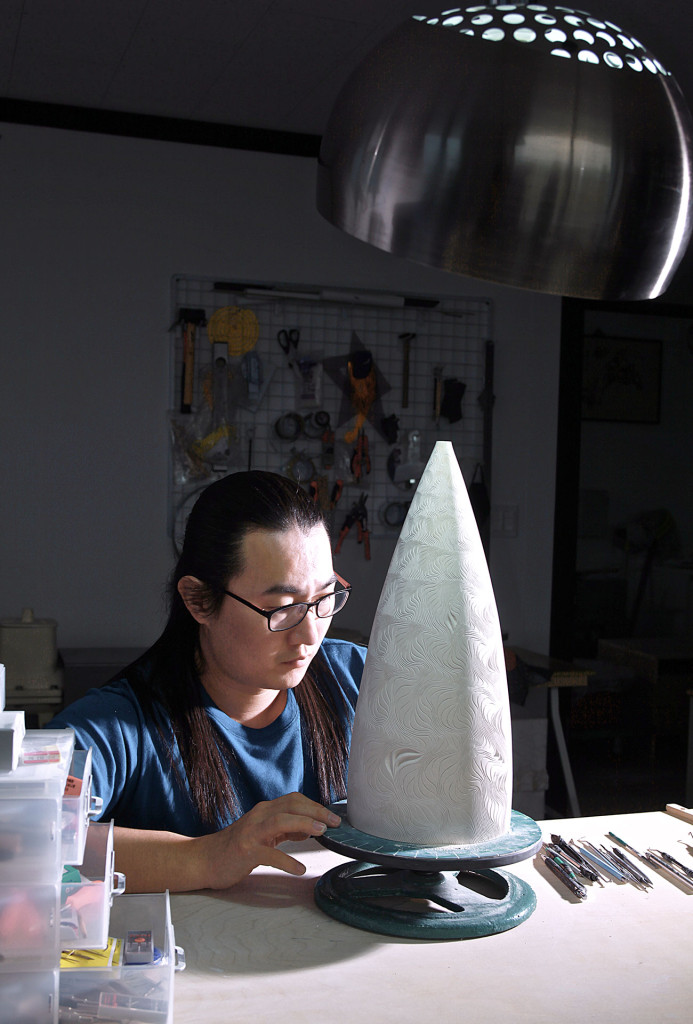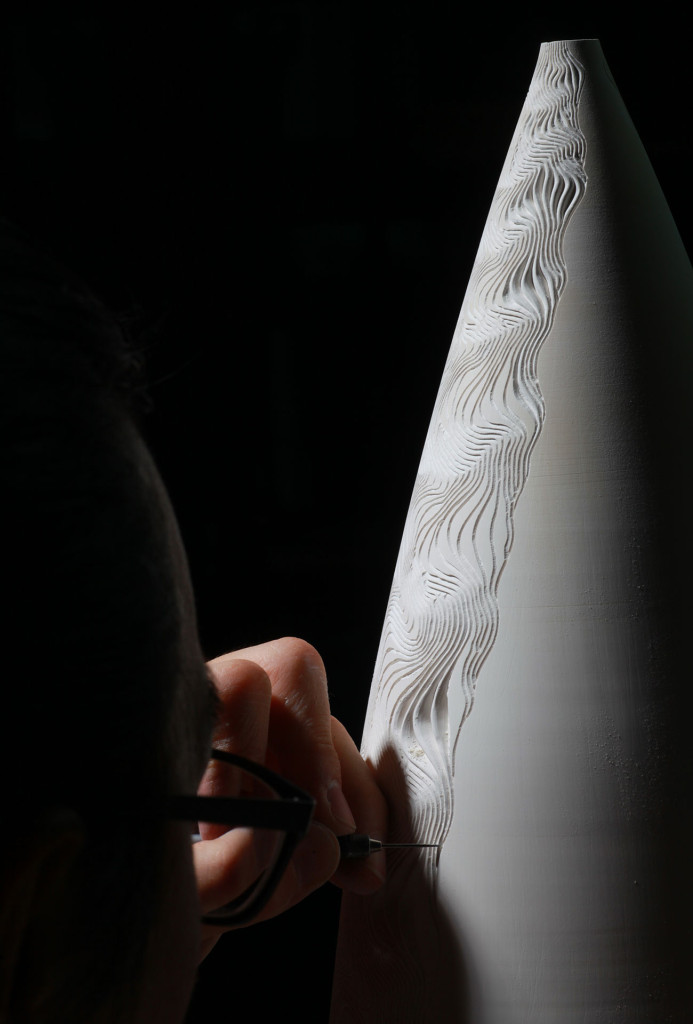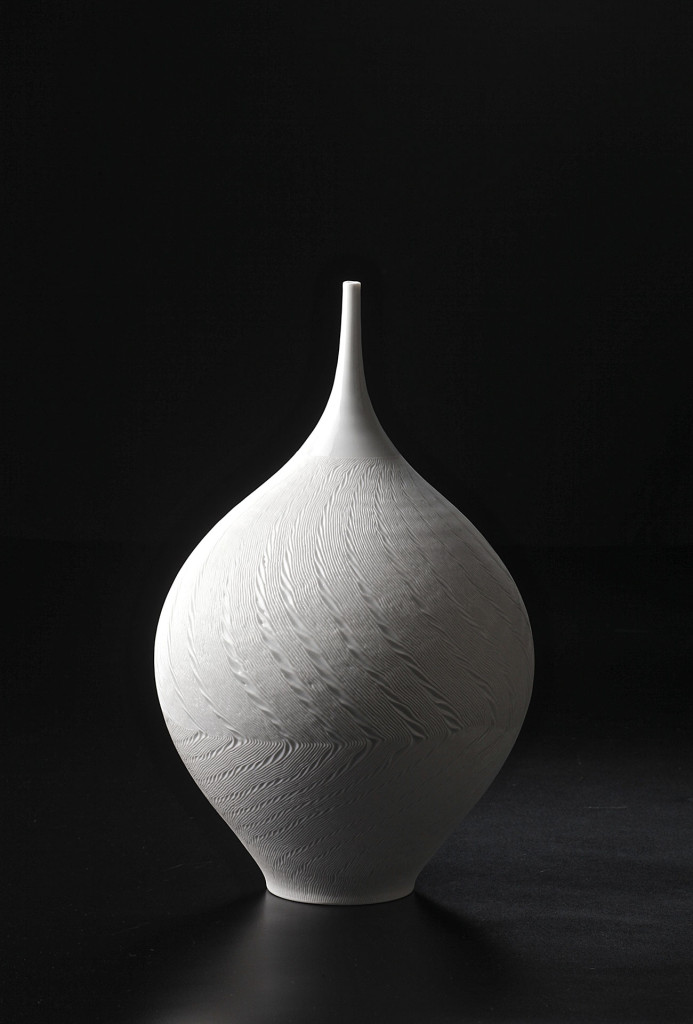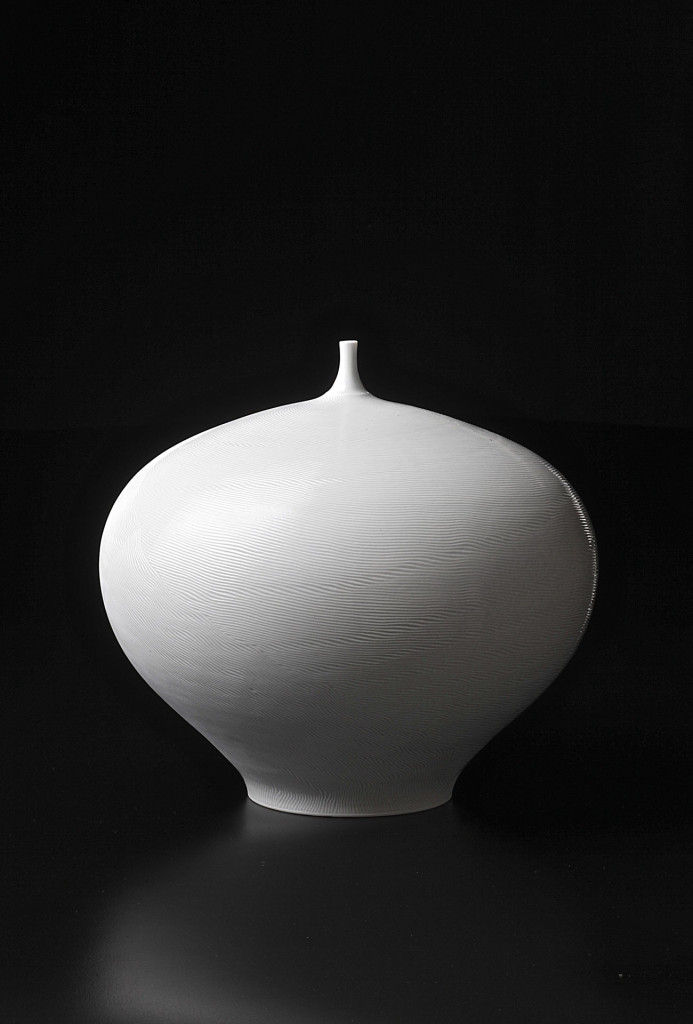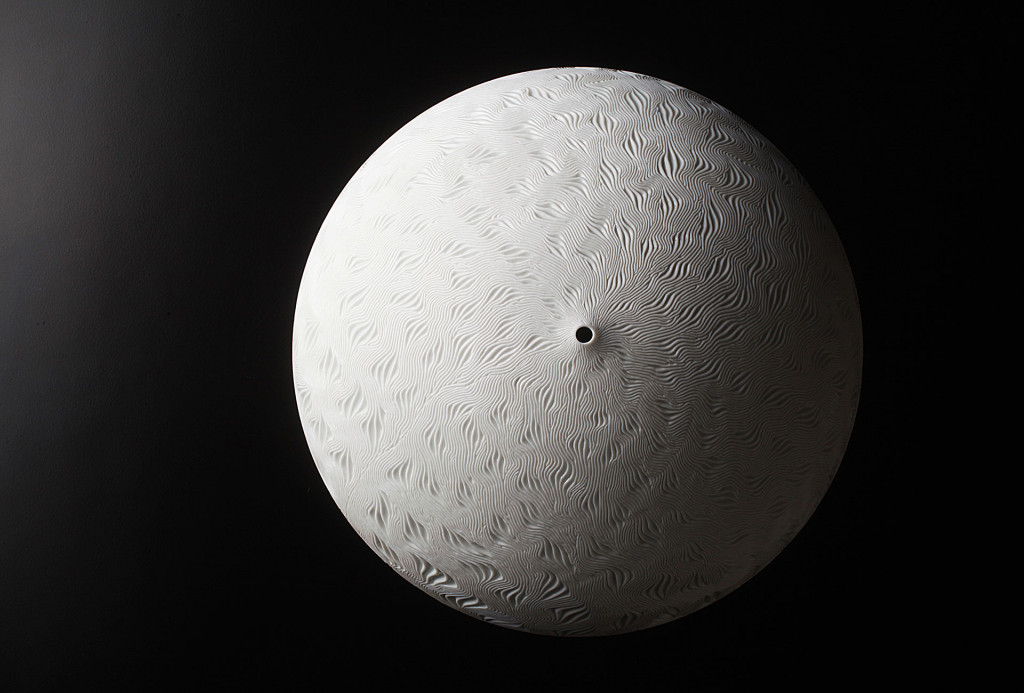After porcelain had made its way from the far Orient to the Occident, it exuded a captivating charm for a long time. Europeans became acquainted with this wondrous, pure-white material in the form of exquisite vessels in the 14th century. In sheer ignorance of its origins, they christened this mysterious substance of inexplicable hardness, which could be scratched only by a diamond, after the Italian name of the Cowry sea snail, i.e. porcellana. After all, they believed that the brightly sounding porcelain bodies — which are all the more translucent the thinner their walls — were made of the snails’ crushed shells.
For a long time, the rare specimens of porcelain objects were the exclusive preserve of the royal courts, where they were jealously guarded and treasured in cabinets of curiosities. Reinvented in Saxony in the early 18th century, the formula of its composition based on the mineral kaolinite remained under tight wraps for a long time as a monopoly held by royal porcelain manufactories. Of course, the companies’ secret eventually leaked out. As a result of its industrialized production, the “white gold” degenerated into a cheap mass-produced commodity in the form of cast tableware — at least in general. Some contemporary studio potters, however, are still capable of reviving what seemed long lost, i.e. people’s fascination with porcelain.
Jong-Min Lee combines artistic inventiveness with an intensity in terms of the crafting process that can be described only inadequately using the phrase “the discovery of slowness”. Born in 1982, Lee studied in England and at the renowned Chung-Ang University in Seoul. After his first solo exhibition in 2011, he presented his works at the Grassi Fair last year. Having grown up with his father’s collection of traditional Korean paintings and ceramics, the young Korean artist quite obviously works in his native country’s long porcelain tradition. His studio is located near the town of Anseong-si south of Seoul, and far enough away from the capital’s hustle and bustle. Jong-Min Lee was strongly influenced above all by the sophisticated porcelain vessels created in the Joseon dynasty, which started in the late 14th century and lasted 500 years. They are characterized by classical shapes, and typical examples include vases with a round-bellied body on a broad base and a short, raised rim, or long-necked, drop-shaped bottles. Traditionally, these vessels were often decorated with cobalt blue, copper red or carved-out decors and motifs and then coated with thin, sometimes slightly blue transparent glazes. Then, in the 15th and 16th centuries, however, the Korean royal court and the members of the elite preferred white ware — puristically designed and sleekly elegant vessels. The ideal of these vessels’ typical shapes, familiar from his father’s home yet at the same time sovereignly reserved in almost transcendent white — symbolizing not a void absence, but instead a rich potentiality — has cast an everlasting spell on Jong-Min Lee.
Nevertheless, this virtuoso at the potter’s wheel does not simply recreate the traditional shapes. Although clearly revealing their origins, his creations have been crafted by modifying these shapes so as to form perfectly rounded, voluminous bodies of supreme dignity. But Lee doesn’t leave it at that: by slimming down the ancient models’ openings to a minimum, he reduces the usefulness of his vessels, many of whose bodies, despite their considerable size, taper off in ultra-thin tubular necks. Some of his cylindrical vessels’ tiny openings have been positioned in recesses reminiscent of bowls. What strikes the beholder as paradoxical is the fact that on the one hand, Jong-Min Lee unquestionably emphasizes the distinctly classical character of his pieces, and on the other hand endows them with a disengaged autonomy by minimizing their functionality. Another distinctive feature of his porcelain vessels is their sophisticated relief surface texture, displaying a vibrantly flowing yet at the same time accurately designed irregularity, as if nature itself had clad them in a most delicate interplay of waves or stirred them into a subtly quivering or rippling motion, or as if a cool breeze had caused a slight shiver on smooth skin.
In addition to the Korean tradition, the second important source of inspiration for Jong-Min Lee’s artistic work is René Lalique. He is immensely impressed, he says, by this Parisian Art Nouveau jewelry and glass artist’s plant and animal motifs, characterized by linear partitions. It might strike us as surprising that the Korean ceramist sees a maximum of naturalness in these historical examples of the applied arts, which we regard as rather artificial and influenced by Mannerism today. Which does not affect his reifying this idea in his vessels with admirable fastidiousness. After bisque-firing his creations, Lee uses a burin or a fine needle to devotedly — in line with one of the ideals of Asian artisanship — engrave his vessels’ walls with those slightly vibrating all-over structures that transform these new interpretations of the ancient Asian porcelain tradition into contemporary treasures. Finally, he enhances some of his vessels with a glossy coating by applying a transparent glaze. There will be hardly anybody who won’t be enchanted by porcelain, this magic material, in view of these sovereign, artistically created vessels, whose grandeur conceals the elaborate crafting process involved. What counts in the end is their — wonderfully East-Western — aesthetics alone.
By Walter Lokau
English translation Sabine Goodman
Jong Min-Lees’ profile on artaurea.com
The ceramicists homepage
First published in ART AUREA 2–2014
